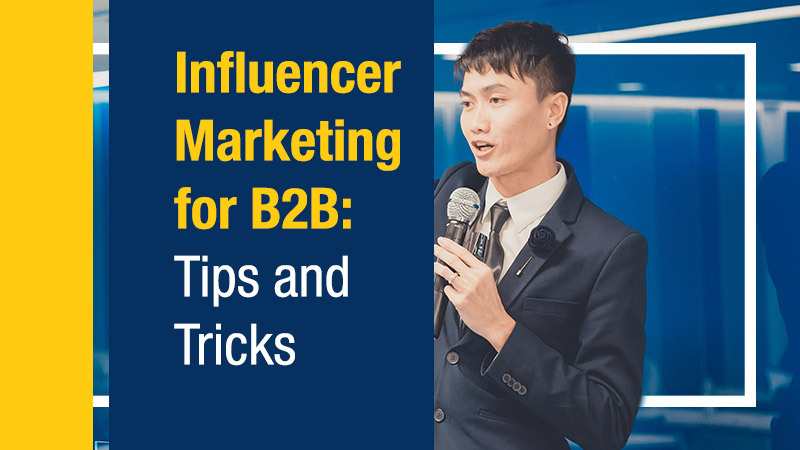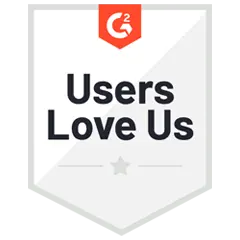Marketing to business customers can be tricky. You have to target a specific audience group and utilize marketing instruments that suit the intended target audience. Unlike B2C marketing, where you can aim for extensive reach, B2B marketing needs to be highly targeted from the start. That poses a serious challenge to marketers, especially when it comes to the utilization of digital marketing instruments.
One of the digital marketing instruments that aren’t commonly used by B2B brands is influencer marketing. For B2C brands, influencer marketing is a powerful instrument for expanding reach and gaining exposure. For B2B brands, influencer marketing becomes a difficult instrument to fully utilize.
Fortunately, influencer marketing doesn’t have to be a complex digital marketing instrument to incorporate into your B2B marketing strategy. There are a lot of things you can do with influencers, and the tips and tricks we are about to discuss in this article will help you utilize influencer marketing to create a bigger B2B marketing impact.
Targeting Is Still Important
Just because you want to incorporate influencer marketing into your B2B marketing program, it doesn’t mean you have to adopt a B2C strategy. Among the elements that are still very important in your implementation of influencer marketing for B2B purposes is the specific targeting mentioned earlier. However, there is a slight shift in how you should map your target audience.
Instead of targeting business customers directly, there are two main targets to aim for: decision-makers and the potential end-users of your target businesses. These two audience segments can be reached using most B2C marketing instruments, including influencer marketing.
The next task is choosing influencers whose followers include your target audience segments. If the end-users of your business customers are teens who are into fashion, for instance, creating digital marketing activities with fashion influencers can be incredibly effective. You are boosting brand recognition among the end-users of your business customers.
Clarify Your Objectives
With a clear target in mind, the next challenge to tackle is setting objectives. You cannot expect to generate leads when using B2C marketing instruments; at least not immediately. What you’re trying to do is increasing brand exposure for the purpose of increasing the value of your brand. When end-users and decision-makers are familiar with your brand, the value of your brand – and your products – gets elevated as well.
Another objective that you can use as a focus is boosting product awareness. By exposing users to the benefits of your products and services – the indirect benefits they will be able to enjoy when your products and services are implemented by other businesses – you are increasing the possibilities of your products being seen by business customers as a viable solution.
Focus on Experience
Influencer marketing for B2B must always focus on experience. The communications programs that need to be implemented must center around a product- or brand-related experience. Boeing does this brilliantly with the company’s influencer marketing campaign. It takes travel influencers and their tangible experience to bring awareness about Boeing airplanes as products.
Bringing influencers to the company’s flight simulator, for instance, allow influencers to interact with Boeing products directly. Travelers who are used to using Boeing planes when traveling the world can now get their hands on flying one, albeit in a simulation. The campaign was incredibly effective, and a lot of awareness was generated from the experience.
B2B companies can use the same approach to put emphasis on the experience they can bring through the implementation of their products and services. An AI company that offers data analytics to business customers, for instance, can build a genuine relationship with influencers through mini experience hubs and by exposing those influencers to the benefits of using AI.
Integrate with Other Marketing Activities
The most important tip of them all, however, is integrating influencer marketing with other marketing activities, particularly activities that are designed to develop brand value and product awareness. Influencer marketing is the perfect instrument for boosting other marketing activities, including trade shows and offline activities.
This is where good campaign and project management comes in handy. What is agile project management? Well, a lot of marketers now utilize a digital Kanban board to get a visual view of different marketing activities at any given time. Agile tools like Kanbanize make managing multiple (concurrent) marketing activities easy, mainly because each activity is represented by a card or a section of the Kanban board.
Through visualization, message alignment and seamless integration of multiple marketing activities in a campaign can be achieved. At that point, influencer marketing will serve its primary purpose as an amplifier to other B2B marketing tactics, all while boosting brand awareness and value.
So, is influencer marketing a suitable instrument to use in a B2B marketing campaign? The answer still depends on how well you integrate influencer marketing with other activities. With the tips and tricks discussed in this article, however, you have more ways to leverage influencer marketing in a B2B environment.












